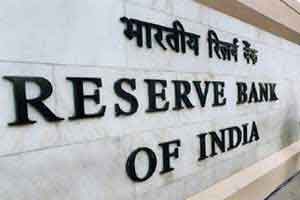Opinion Why inflation needs to come down first
On Wednesday,Morgan Stanley said the 0.25 per cent rate cut by the RBI is unlikely to be effective unless the retail inflation eases

On Wednesday,Morgan Stanley said the 0.25 per cent rate cut by the RBI is unlikely to be effective unless the retail inflation eases,coupled with an improvement in deposit growth. Standard Chartered too cut its house view on the rate cut expectations following RBIs cautious tone on its outlook in mid-quarter policy statement,wherein the central bank specifically singled out the likelihood of inflation staying range bound in the 6 per cent-plus bracket,alongside the high current account deficit,as the inhibiting factor that limits the headroom for further rate cuts.
From the RBIs perspective,its a difficult toss-up. Indias growth-inflation dynamics on either side of the 2008 global financial crisis seem to offer compelling evidence of the fact that inflation has to be controlled first,and that this will eventually help growth too. In the three year period ahead of the 2008 global financial crisis,the economy grew by 9.5 per cent on an average,spurred largely by a ramp up in fixed investment. This expanded overall production capacity to match growing demand and kept core inflation down. Post-crisis,the story changed,with investment declining to half its pre-crisis rate even as consumption demand stayed at the pre-crisis level until last year,partly due to the Centres entitlement and welfare programmes,stoking non-food manufactured inflation.
One of the questions specific to India is why inflation continues to be high even in the face of steeply moderating output growth. Reasons being offered for this peculiar macroeconomic situation in India include supply bottlenecks,particularly in infrastructure,rise in wages without a corresponding increase in productivity,higher fiscal deficit and sharper depreciation of the exchange rate. The RBI explanation is that the relationship between growth and inflation is non-linear: at low levels of inflation and stable inflation expectations,there is a trade-off between growth and inflation essentially implying that some inflation can be tolerated to stoke the growth engine. But above a certain threshold inflation level,this relationship reverses,the conventional trade-off loses context,and high inflation actually starts eating into growth. Estimates by the Reserve Bank using different methodologies peg this threshold in the range of 4 to 6 per cent. So Tuesdays 25 bps cut in the repo rate needs to be seen in the light of that fact that the inflation reading continues to be above this threshold limit. Reduction in growth,according to the RBI,is an inevitable outcome of a tight monetary policy. But this sacrifice is only in the short-term.
Anil is a Senior Editor based in New Delhi.
anil.s@expressindia.com





